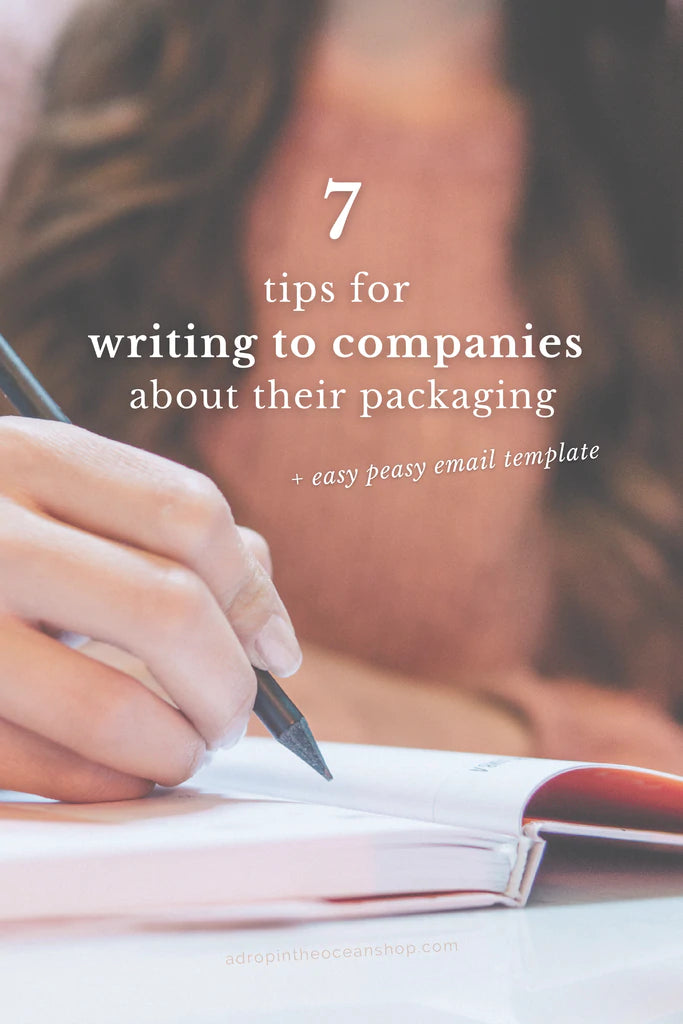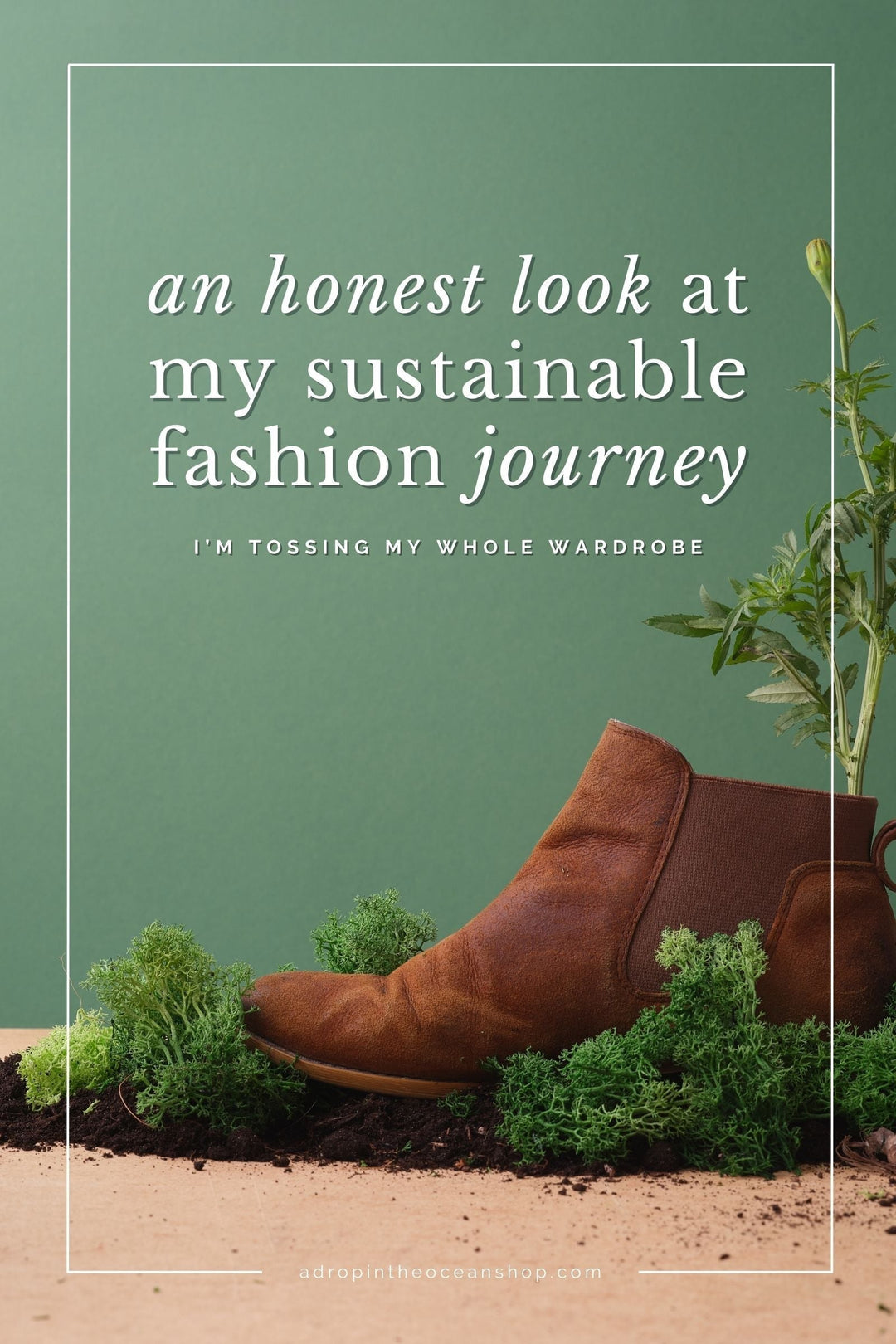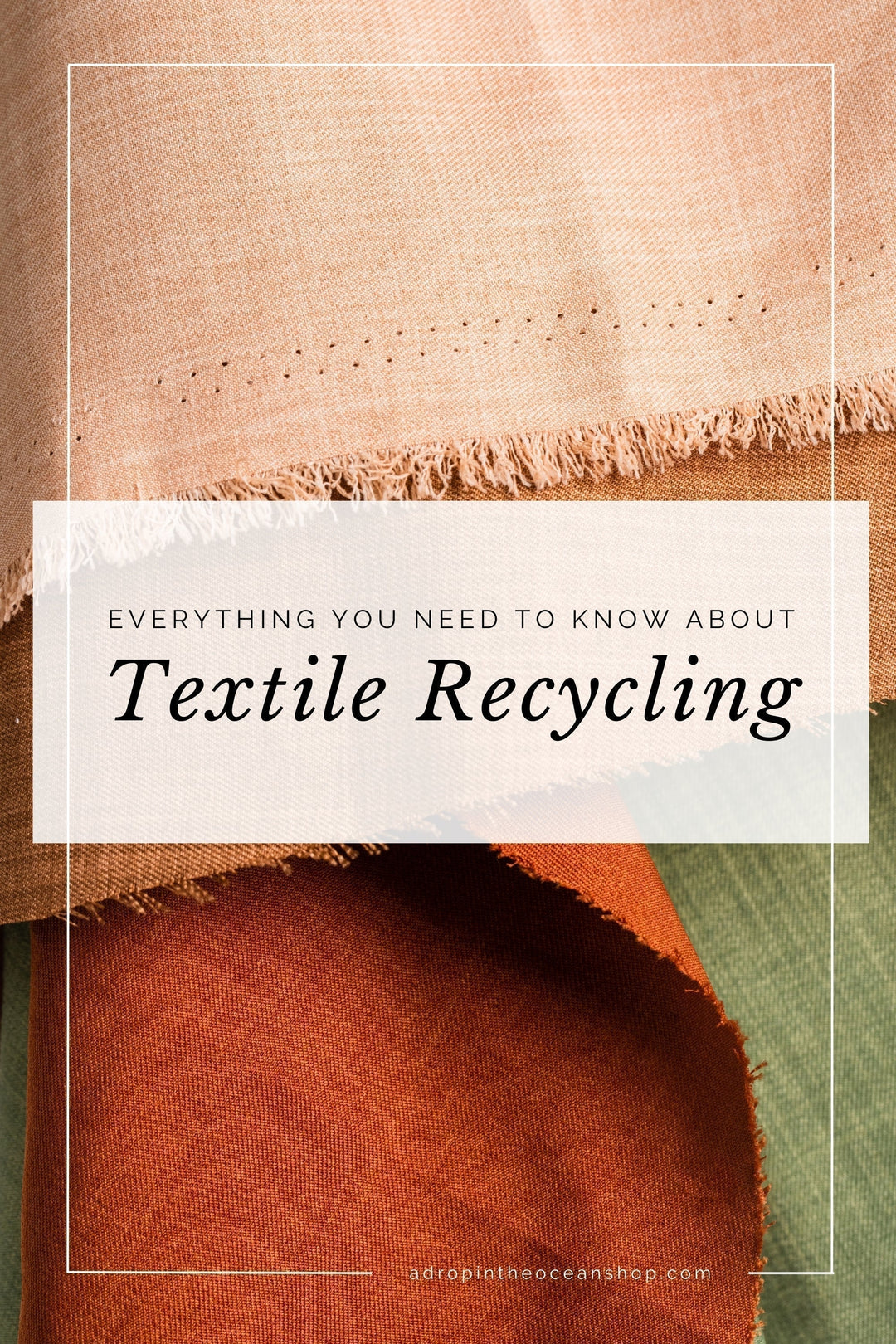7 Tips for Writing to Companies About Sustainability

Hey EcoWarrior!
Question for you…
Do you have a favorite brand of makeup that packages their products in non-recyclable or disposable packaging? Or maybe a favorite local restaurant that uses styrofoam takeout containers? Or maybe your favorite blog promoted a fast fashion brand the same week they half-spoke out about climate change (aka my experience that sparked this week’s email)?
You probably know by now that I’m a huge advocate for living by your values, voting with your dollar, and making changes in your life to leave a smaller footprint on our planet.
But we can’t reach a sustainable future for all living things in a vacuum. We need governments and corporations to make changes, too. We need bottom-up and top-down change.
So let’s talk about reaching out to companies to improve their practices.
Companies aren’t mind-readers. We have to speak up and tell them what we want if we can ever expect changes. And one of the best ways is to just write them an email!
So here are a few of my best tips for writing to companies:
1. Write to brands you admire.
Ultimately, the brand you’re writing to needs to watch their bottom line. And from a business standpoint, an existing customer is way more valuable than a new one. So if you already admire a brand or product, but don’t love its lacking sustainability efforts, this is a really great place to start.
If you can show the brand that you do love their products and you want to continue supporting them, but you are practicing living in line with your values - including packaging and sustainability - and will therefore no longer be able to use their product or will be looking for alternatives, that brand is more likely to listen to your feedback.
They don’t want to lose you as a customer.
2. Show them why sustainability is desirable.
It’s so much easier to help people (and brands) move towards something desirable rather than away from something undesirable.
While sometimes we need to show why something isn’t desirable, it’s easier to say “Hey, look at what could be. Look at the future you can create by making these changes.”
In many cases, the benefits can be monetary, too. A 2019 study found that about 47% of consumers will pay more for a sustainable product than an unsustainable one, and many case studies have shown that even small businesses can see massive returns from switching to reusable packaging over disposable.

3. Give examples of alternatives.
I’m adamant about this one.
One of my biggest pet peeves is when someone says something like “avoid single-use plastics!” without giving a single practical alternative. If you’ve been around here a while, you’ve hopefully noticed that any time I talk about moving away from one unsustainable thing, I always provide an alternative.
Because we aren’t all-knowing beings. We don’t know what we don’t know. If you want change to happen, you need to give concrete examples of how we can make that change happen.
Let’s say there’s a face cream you love that comes in a plastic tube, and you want the company to change its packaging. If you just say “I don’t want your face cream in plastic,” you’re not really telling the brand what you want. You’re telling them what you don’t want (similar to Tip #2). Do you want the cream in a metal tube? A glass jar? Do you want the company to offer a take-back program for their plastic tubes and clear evidence that the tubes are being recycled or reused?
Be specific. It also shows the brand you really do care (because...Tip #1), and that you’ve taken the time to think about it.
4. Keep it short.
I was going to start this section with a quote from Benjamin Franklin: “I have already made this paper too long, for which I must crave pardon, not having now time to make it shorter.” And ironically, when I googled it, I found an article listing so many other prominent people in history that have said similar.
So clearly, succinct is significant.
I could learn a thing or two, clearly…
So, to keep this tip short, keep your email short. It’s more likely to be read in full and responded to or acted upon.
5. Call out good practices, too!
Got a local cafe that lets you bring your own mug? Shout ‘em out on social media! Or send them an email letting them know how much you appreciate what they’re doing.
Does your favorite face cream already come in a refillable jar? Great! Shout them out too!
It’s important to remember not only to support these brands with our dollars, but also with our voices. Make sure these brands know that we appreciate their efforts and want them to continue.

And, for good measure, a few tips of what NOT to do:
6. Don’t spend your energy on brands you don’t or won’t support anyway.
This is expanding on Tip #1 above. If you’ve never purchased from a certain brand and have no plans to in the future, don’t waste your energy on them.
Your energy is sacred. Value that.
For example, let’s say there’s a company that makes shampoos. Their shampoos are packaged in plastic, have harmful chemicals and artificial fragrances, and they don’t pay their employees a living wage. That company would have to change damn near everything about themselves to convince me to buy from them. I’m not going to have anything nice to say in my letter to show them that I want to support them.
They’re going to skim my email and delete it, saying to themselves “Well she’s never going to buy our shampoo anyway, and hasn’t bought it before, so we’re not losing any money from her, we don’t need to make changes to appease her.” These are the realities of capitalism, my friend.
Remember, waste comes in many forms.
Wasted time.
Wasted energy.
Wasted resources.
While I’d love to see that company do better, the reality is it’s not worth my time, energy, and resources to send that email. (Because remember, emails have a higher carbon footprint than we like to think.)
7. Don’t be angry.
People don’t respond to angry. If your email has an angry tone, they’re less likely to want to help you.
Okay, how ya feeling, my friend? Ready to send some emails? Perfect 😁 I’ve even got a sample email all ready for you!
Sample Template:
Dear [company name],
I absolutely love your [product]. [Give examples of why, or other things you like about the company.]
I’m also trying to reduce my waste, and choosing sustainably-packaged products is one of the first steps I’m taking. We’ve produced exponentially more plastic in the last two decades than we did in all of the last century, and it’s causing detrimental harm to our environment. I’m trying to do my part to eliminate as much packaging as I can to protect the health of our planet.
Unfortunately, as your [product] is packaged in [packaging type], it can no longer be a part of my daily routine. I would love to continue using it, though, if the packaging was instead [give examples of packaging options you’d support].
I do hope to continue supporting your brand moving forward. Thank you for your consideration and I hope to hear from you soon.
All my best,
[Name]
[ways to contact]
Of course, this template can be customized for any issue you want to address - packaging, ingredients, sourcing, anything!
So...who’s first on your list to email? I’d love to hear how it goes. Pop over to the EcoWarrior Pod Facebook group and share with us your experience!









What a genuinely motivating read.. The balance you strike between advocacy and realism is refreshing. We’ve often had to navigate similar territory when buyers request more eco-packaging but local suppliers push back due to costs or logistics. In our experience, offering detailed, solution-driven feedback—like suggesting glass jars with buyback programs or recycled polybags with QR-coded recycling chains—has opened real conversations with both vendors and clients. It’s encouraging to see more people push for this kind of accountability from brands they already support. Thanks for turning frustration into proactive energy—more of this, please.
I contacted Bear, a gummy company. They used to package their gummies in a paper wrapper and have since switched to a plastic wrapper with a foil lining. Their FAQ website is defensive about it – the switch was defended because the paper packaging had glue on it and wasn’t recyclable anyhow. And the plastic wrappers actually are recyclable in places. Maybe not yours, the consumer, but the implication is that’s your problem. I wrote them and told them the time is perfect to return to sustainable packaging. The gummies are hitting big box supermarkets like Target and Walmart. People want to purchase sustainable goods as well as delicious goods.
Leave a comment